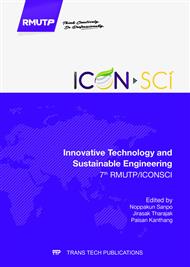p.212
p.216
p.220
p.224
p.233
p.240
p.244
p.251
p.256
Study on Air Permeability and Warmth Retention Ability of Polyurethane Foam Plying with Fabrics
Abstract:
In this study, we evaluated warmth retention ability of polyurethane foam (non-laminated and laminated) plying with fabrics. The warmth retention ratio, measured by KES-F7, was used for expressing the thermal property of plied samples. Experimental results revealed that the warmth retention ratio of samples that were plied with fabrics were higher than the foams in plain (i.e. without plying with fabric). For non-laminated foams, the fabrics had generally increased the warmth retention ratio by 10%. For laminated foams, the increase was about 4 to 5% in the warm retention ratio. By comparing the warmth retention ratio between the non-laminated foams and laminated foams, laminated foams have higher heat retention power. Being a close-to-skin garment, the air permeability is an important factor to determine their usage. Thus, we examined the air permeability of the different samples and the results were discussed properly.
Info:
Periodical:
Pages:
233-239
Citation:
Online since:
June 2017
Keywords:
Price:
Сopyright:
© 2017 Trans Tech Publications Ltd. All Rights Reserved
Share:
Citation:


